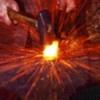A new student asked me the other day if I would bless a talisman for them. I had to explain that we don't work in that way. This student is coming from a Western witchcraft / pseudo-Wiccan perspective and does not yet have an understanding of what we do in Makaya Vodou. So, I thought I would start a topic on what we do and don't do and why, as well as similarities to Western witchcraft. The basics are this: 1. We work with Lwa spirits, the dead, spirit medicine (nkisi), and earth energies. 2. We make spirit fetishes and send forth spirits. 3. We gain knowledge by being mounted by Lwa and Djab spirits. 4. We divine EVERYTHING. 5. We manifest change and bring to fruition the results of our desires by journeying into the Ocean of Spirit and bridging the gap between that realm and ours. Sticks are used to make powders, add to spirit fetish cauldrons, bottles, bags, etc.. We do not wave or point sticks like wands. We don't make or bless talismans, we make objects that contain spirit medicine, a living spirit energy. We don't pray to gods or God, we manifest change by manifesting spirits, divining, and projecting our kundu (witch-spirit-substance) from the heart. We do not concern ourselves with the four directions, elemental pentagrams, or any other ceremonial representations of natural energy, we work with the energies directly. Everything we do has to do with life's journey and the points of transition and change. We do not have a creed, motto, or written doctrine. Our liturgy is about personal path and growth, not pacts within a coven, except that if you turn on your hounso (temple) or society we will all unite to turn against the traitor with great force and without compassion. That should be a good start I think. -- Blacksmith






